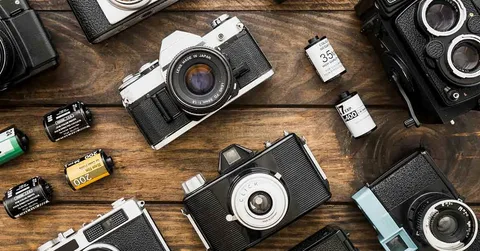
Film equipment insurance Every picture and film shoot comes with risks for the company that does it. It’s possible that your photo gear will get broken, lost, or stolen. It’s pricey to buy new equipment, but with the right business insurance and equipment coverage, you can protect your business and your pocket without spending a lot of money.
Business insurance can protect you from the risks of handling on-screen talent, your team, and any support staff, whether you make docs, ads, special event videos, or full-length movies.
Folks who work as shooters, filmmakers, or in video production companies need to know what risks they might face, what insurance policies are best for them, and how much these policies cost.
Small businesses take a big risk when they buy video recording tools.
pronto insurance added up, the cost of video recording tools is one of the biggest costs for a business. Repairing and replacing broken or stolen gear costs a lot of money. That’s why a lot of people in the film and photography industries get video equipment insurance.
fred loya insurance Most of the time, business insurance for photographers and videographers will cover most of the gear that a filmmaker would need, such as:
- Videos Cameras
- Glasses and lenses
- Lighting gear, such as mirrors and light filters
- Speakers and microphones
- Recorders for sound
- Dollys, boom poles, tripods, and grip gear
- Gear for cameras and gimbals
- Hardware like computers, editing tools, and extra hard drives
- Batteries, cords, and camera bags
What isn’t covered by insurance for film production?
It’s not possible that your insurance will cover your video equipment while it’s hired out or borrowed by someone else. Also, your film gear insurance might not cover you if you rent american national insurance equipment or if you don’t keep your own equipment safe, like by leaving it in an open car where it could be stolen.
How much does Film equipment insurance for making movies cost?
How much do you think it will cost to get protection for making videos? It depends on a number of things about your company, such as:
Limits on coverage and deductibles
Your business insurance policy’s premium hugo insurance and coverage limits can have a big effect on how much you pay each month for a whole year of coverage.
A deductible is the amount of money you have to pay out of pocket before your insurance starts to pay. A insurance with a high deductible and a cheap payment might seem like a good deal at first, but if you need to make a big claim, this could cost you a lot.
For instance, harley davidson insurance if you are in charge of a video production business with a lot of equipment, you might be told to get an insurance with a lower cost because of the higher chance that equipment will be lost or destroyed.
You can also choose between two types of area limits:
Per-occurrence: Film equipment insurance amount of coverage a policy gives for each claim.
Aggregate: The total amount of money your yearly contract will pay for all claims made in a year.
It is important to pick insurance limits that give you the coverage amounts you need to protect your bottom line at a price you can afford.
For just a few hundred dollars a year, you can protect tens of thousands of dollars worth of tools and keep your business safe from common risks like theft and lawsuits.
The film gear you own
Film equipment insurance you run a photography or video creation business that uses a lot of different types of high-quality cameras or movies cool insuring arena, you should get an insurance with a higher coverage amount. Even though this would raise the cost of your insurance, it would protect your expensive gear from frequent dangers.
If your business only uses a few cameras or movies of average quality, you might be able to get a policy with a lower coverage limit. This would help keep your insurance costs down.
What you do for a living
Film equipment insurance work you do can also change how much your insurance costs. You should look at an insurance with higher coverage levels if you travel a lot for photo or video shoots or shoot in places with more risks. This could mean that the cost of your coverage goes up.
Which kinds of protection do shooters and filmmakers need?
Film equipment insurance workers are looking for insurance for their photo or video business, they should look into these policies:
Insurance for your home
Videography property insurance, which is sometimes called “camera insurance,” protects most of your video gear, like cameras, lenses, computers, and editing bays, in case it gets lost or stolen. You can get back on track to finish a project with this. Most of the time, you can cover both owned and hired gear, as well as workshop areas.
Property insurance for videographers starts at about $35 a month, or $420 a year.
Liability insurance in general
Film equipment insurance someone gets hurt at work or on set, your general liability insurance will cover cases for copyright violations and injuries to people who aren’t your workers qatar insurance company shariah compliance. Third-party property damage is also covered. This includes damage to someone else’s property that happens by chance, like a close car getting damaged by a trick gone wrong. If you’re working on site, this rule is even more important to keep in mind.
Most videographers pay $23 a month, or $275 a year, for general liability insurance. Almost all photo and video businesses (96%) choose general liability plans that cover up to $2 million in total damages and $1 million in damages per event.
The policy for business owners
There is one policy called a business owner’s policy (BOP) that covers both general liability and industrial property. Most of the time, it costs less than getting each service individually wdroyo insurance. A business owner’s insurance is helpful for most video workers because it covers most of the risks that come with shooting with your own gear in different places.
A business owner’s insurance costs about $43 a month, or $520 a year, for people who work in video.
Insurance for professional risk
Film equipment insurance Professional liability insurance, which is also called mistakes and omissions insurance, protects you in case a client sues you for work that wasn’t done or wasn’t done well. Your property insurance would cover the damage or loss of the equipment if you can’t finish a job because a hard drive crashed or was stolen, but not the cost of a claim from a customer. Professional responsibility would pay for the cost of your lawyer, the court costs, and any settlements.
Professional liability insurance costs an average of $53 a month, or $639 a year, for video workers. The price will be based on the services you provide and some other important factors.
It’s more than half of photo and video businesses (58%) that choose professional liability insurance with a $1 million limit per event and a $1 million limit overall.
Insurance for workers’ compensation
If you hire people to work for your video creation company, you will probably also need workers’ compensation insurance. This insurance is needed in almost all states and protects against accidents at work insurance for car in clovis otosigna and other responsibilities that come with them. This includes paying for hospital costs and some lost wages.
For video experts, a workers’ comp insurance costs about $55 a month, or $662 a year.
How to get cheap insurance for making movies
There are a number of ways to lower the cost of your film production insurance, such as:
Looking at how much your tools costs
Film equipment insurance biggest and most important thing your business will buy is all of its picture and video gear. The exact cost will depend on the brand and quality of your gear. When making a budget, it’s especially important to keep track of how much all of your tools costs.
Here is a list of the most popular tools you’ll need and how much they usually cost:
$300–$500 for a camera
Tripod: $20 to $50
$200 to $300 for a lighting set
$40 to $50 for a backdrop system
$20 to $30 for reflectors
Writing off expenses on taxes
You should keep careful records of everything your business buys and try to get tax breaks when you can.
You might be surprised at how many costs you can deduct. Some examples are
- Things used for photography, like cameras, lenses, and tripods
- Software for making and changing
- Advertising in print
- Cards for business
- Costs of running a studio, like rent and bills
- Advertising on the Internet, like Google Adwords and Facebook Ads
- Any kind of creative help, like hiring an editor, artist, or set assistant
- You could also write off your power and water costs, your Wi-Fi bill, and your home office items if you work from home. Also, if you have to drive for work, you could claim the cost of your gas, parking, and tolls.
Putting together insurance plans
When you can, midvale insurance combine your insurance plans. For instance, getting a BOP is often less expensive than getting different policies for general liability and business property.
Film equipment insurance Taking care of your money well and setting goals
Keep your work and personal money separate and keep track of all your costs. You can also plan for the long run by making monthly and yearly spending goals. A meeting with a CPA and a bookkeeper could also be helpful.
With Insureon, you can get prices on film production insurance from reputable companies.
Use Insureon’s simple online application to get quotes on photography and video business insurance from the best U.S. insurance companies and agents right now midvale insurance. You can start getting insurance for your small business and get your proof of insurance from the insurance company in less than 24 hours after you find the right policy.






